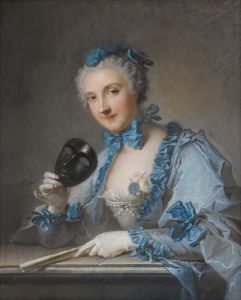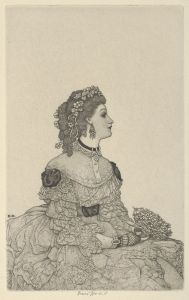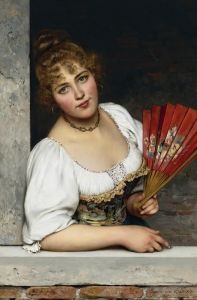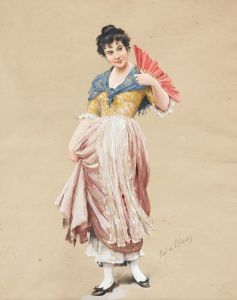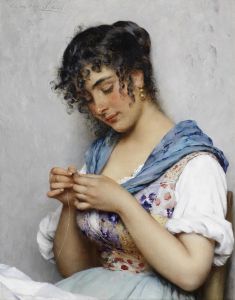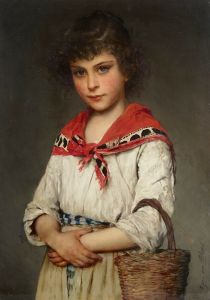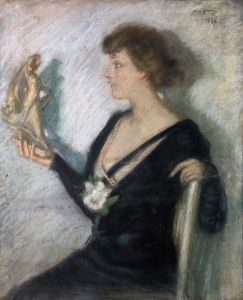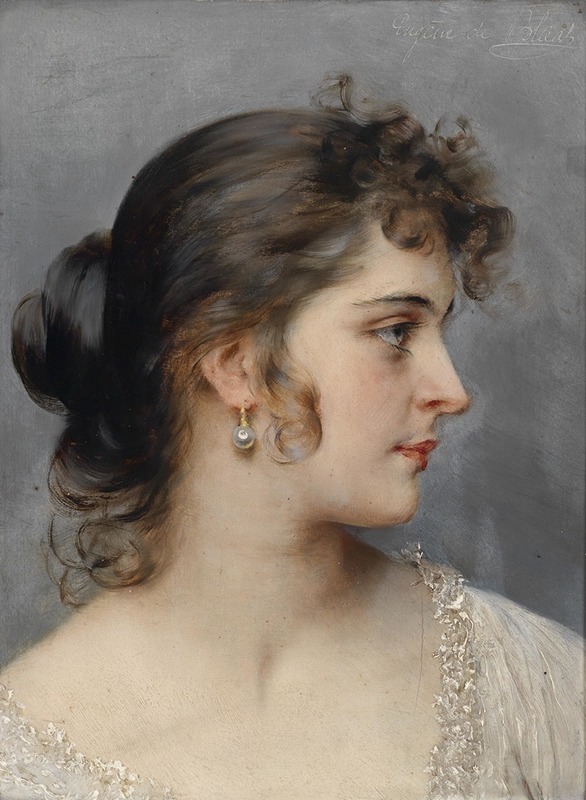
Bildnis einer Dame
A hand-painted replica of Eugen von Blaas’s masterpiece Bildnis einer Dame, meticulously crafted by professional artists to capture the true essence of the original. Each piece is created with museum-quality canvas and rare mineral pigments, carefully painted by experienced artists with delicate brushstrokes and rich, layered colors to perfectly recreate the texture of the original artwork. Unlike machine-printed reproductions, this hand-painted version brings the painting to life, infused with the artist’s emotions and skill in every stroke. Whether for personal collection or home decoration, it instantly elevates the artistic atmosphere of any space.
Eugen von Blaas, an Austrian painter renowned for his genre scenes and portraits, created the painting "Bildnis einer Dame" (Portrait of a Lady). Von Blaas was born on July 24, 1843, in Albano Laziale, Italy, and was part of a family of artists. His father, Karl von Blaas, was also a distinguished painter, which greatly influenced Eugen's artistic development. Eugen von Blaas is often associated with the Academic style, and his works are characterized by their meticulous attention to detail and vibrant depiction of everyday life.
"Bildnis einer Dame" exemplifies von Blaas's skill in portraiture, capturing the elegance and poise of his subject. While specific details about the painting's creation date and the identity of the lady depicted are not widely documented, it is consistent with von Blaas's oeuvre, which often focused on capturing the beauty and grace of women. His portraits are noted for their lifelike quality and the ability to convey the personality and mood of the sitter.
Von Blaas's technique involved a careful layering of paint to achieve a smooth finish, which is evident in "Bildnis einer Dame." The painting likely features a rich color palette, with particular attention to the textures of the clothing and the subtle play of light on the subject's face. This attention to detail is a hallmark of von Blaas's work, reflecting his academic training and his dedication to realism.
Throughout his career, von Blaas was celebrated for his ability to portray the human figure with both technical precision and emotional depth. His works were popular among collectors and were exhibited widely during his lifetime. The appeal of his paintings lies in their accessibility and the universal themes of beauty and human interaction.
Eugen von Blaas spent much of his career in Venice, which influenced his choice of subjects and the atmospheric quality of his paintings. The city's vibrant culture and picturesque settings provided ample inspiration for his genre scenes and portraits. While "Bildnis einer Dame" is a portrait, it likely shares the same attention to setting and context that characterizes his other works, even if the background is understated to focus on the subject.
Von Blaas's contribution to art extends beyond his paintings; he played a role in the broader 19th-century art scene, which was marked by a tension between traditional academic art and emerging modernist movements. Despite the changing art landscape, von Blaas remained committed to his style, which continued to attract admirers for its beauty and craftsmanship.
Eugen von Blaas passed away on February 10, 1931, in Venice, leaving behind a legacy of works that continue to be appreciated for their artistic merit and historical significance. "Bildnis einer Dame" remains a testament to his skill as a portraitist and his ability to capture the essence of his subjects with grace and precision.





